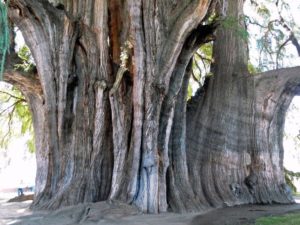World 🢖 Africa 🢖 Spain 🢖 Canary Islands 🢖 Tenerife
Wonder
Drago Milenario
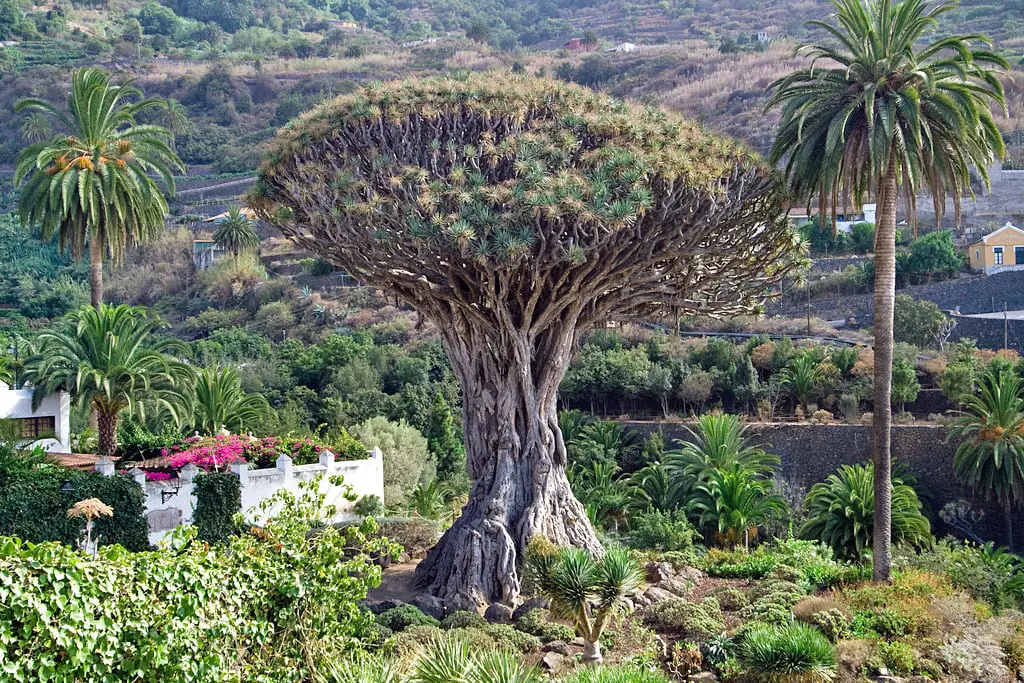
 In short
In short
The best known noble tree of Canary Islands is Drago Milenario – the largest and oldest existing Canary Islands dragon tree (Dracaena draco).
 48.0%
48.0%
GPS coordinates
Location, address
Species
Circumference
Height
Map of the site
If you see this after your page is loaded completely, leafletJS files are missing.
 In detail
In detail
Dragon trees
Dracaena draco belongs to the Dracaena genus together with some 110 other species of succulents – smaller plants, shrubs and trees.
These are not typical trees. The growth of dragon trees starts with a single stem. When it is some 10 – 15 years old, there start growing branches from its end, and after the next 10 – 15 years there again start growing new branches from the end of each older branch. Thus develops a specific, unusual crown, characteristic only to dragon trees.
Some hundreds of Canary Islands dragon trees still grow in the Canary Islands, one or two – in Madeira. Many were rather recently discovered in Morocco.
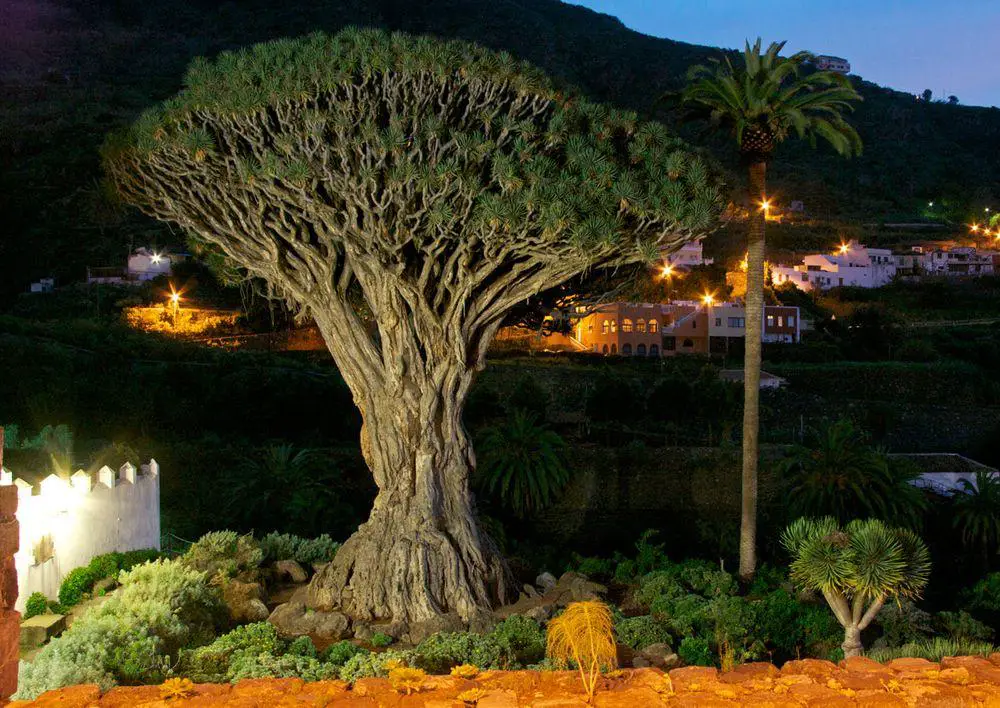
The largest dragon tree
Drago Milenario of Icod currently is the largest and oldest dragon tree. Circumference of the trunk at the base is some 20 m, at the height of 1.3 m – 17.4 m. Height of tree is approximately 16.4 m, it has some 300 main branches.
When the tree is flowering, it gets up to 1800 flowers and becomes up to 3.5 tons heavier.
Trunk has large cavity which can be entered through a door. There is made ventilation in the trunk to prevent rotting.
El Drago Milenario means – Thousand Years Old Dragon – because earlier people believed that tree is more than thousand years old, even – 3,000 years old. Now most specialists think that it is 300 – 400 years old.
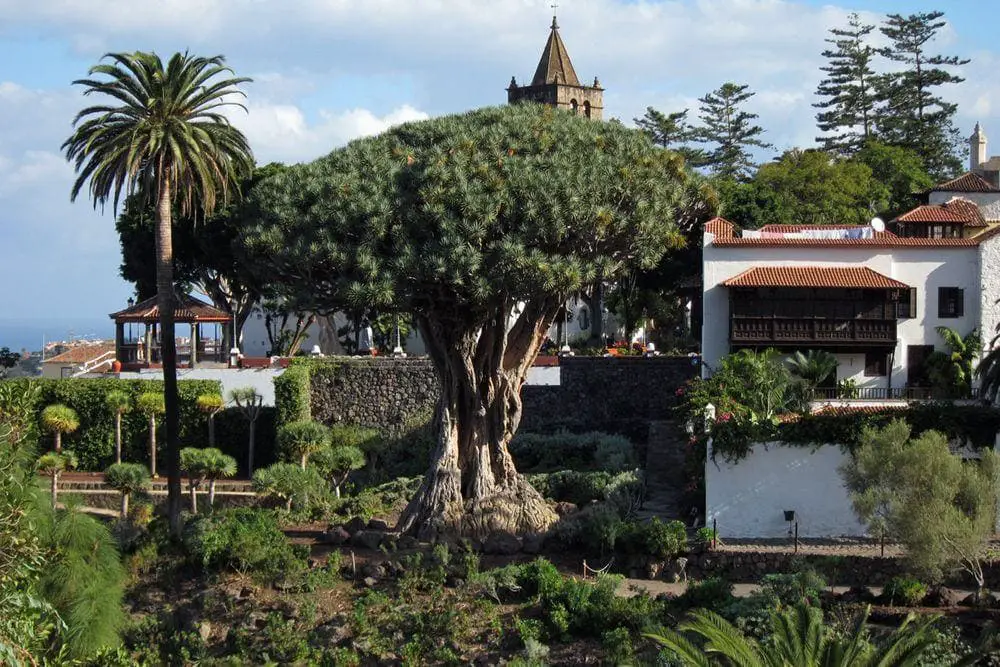
History of Drago Milenario
Drago Milenario is a symbol of the city of Icod. It was declared as a national monument already in 1917. Base of the trunk was reinforced with concrete in the 1930s in order to prevent collapse of the tree. Concrete has been shaped to make it look similar to the tree.
As the city evolved, tree was surrounded by buildings and streets. In 1993 the nearby street was diverted and a park of Drago Milenario (approximate area – 3 ha) was set in 1996. Rare and endemic plants of Canary Islands are planted in this park. Tourists should pay an entrance fee to enter the park.
Earlier existed a much older dragon tree in Tenerife, in nearby Orotava. This tree had a carved sanctuary inside and was considered to be sacred by Guanchi. This tree was 21 m tall and had a circumference of 14 m, but was destroyed by a storm in 1868.
Legend about the blood of dragon
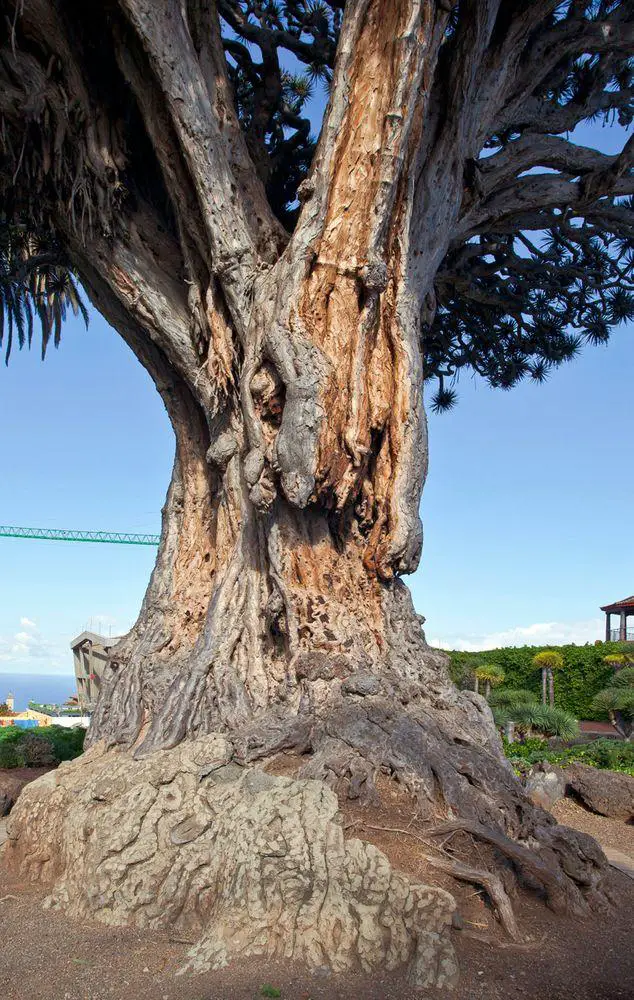
There is a legend about dragon trees of Canary Islands:
Long ago a merchant came to the islands in the search of dragon’s blood – a substance of extreme value for making certain medicaments.
When this merchant landed on the beach near present day Icod, he was struck by the beauty of local girls who came here for a ritual bath.
He started to chase one of girls. Girl tried to win some time by offering him some unseen fruits of her land.
Sailor started to think that he has come to the mythical Garden of Hesperides and is offered the legendary apple from this garden.
While he was eating the fruit, girl managed to escape: she jumped across a deep ravine and disappeared among the trees.
Merchant was chasing her among the trees and was increasingly surprised – the branches of trees were like snakes but leaves – like daggers. Merchant threw a spear towards such monstrous, seemingly living tree and was spellbound – blood started to flow from the tree.
Then merchant flew away from the island – he was convinced that dragons are coming to defend the Garden of Hesperides.
The sap of dragon tree was very valuable. In medieval times it was used for treating almost any illnesses. It was used also for dying the wood (also for Stradivarius violins), even as a varnish to prevent the rust.
Research shows that the sap of dragon blood tree is unusual indeed. It contains many rare and unique compounds, such as saponins with good potential to treat leukemia.
Drago Milenario is included in the following article:
 Linked articles
Linked articles
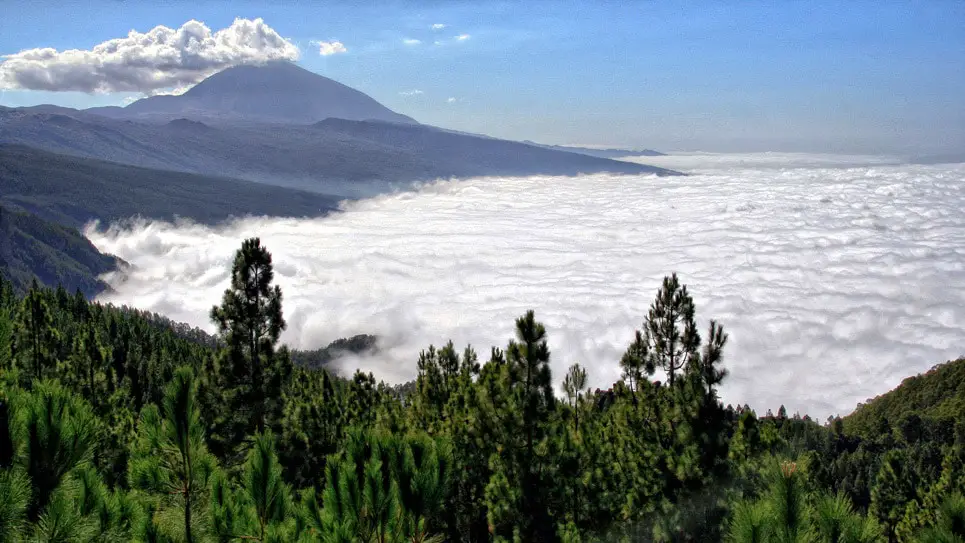
Wonders of Canary Islands
The Canary Islands are gorgeous volcanic islands that are very rich with diverse natural and man-made landmarks. It is hard to single out the most outstanding kinds of Canarian landmarks, but these could be the heritage of Guanche, historical European cities, and ecosystems.
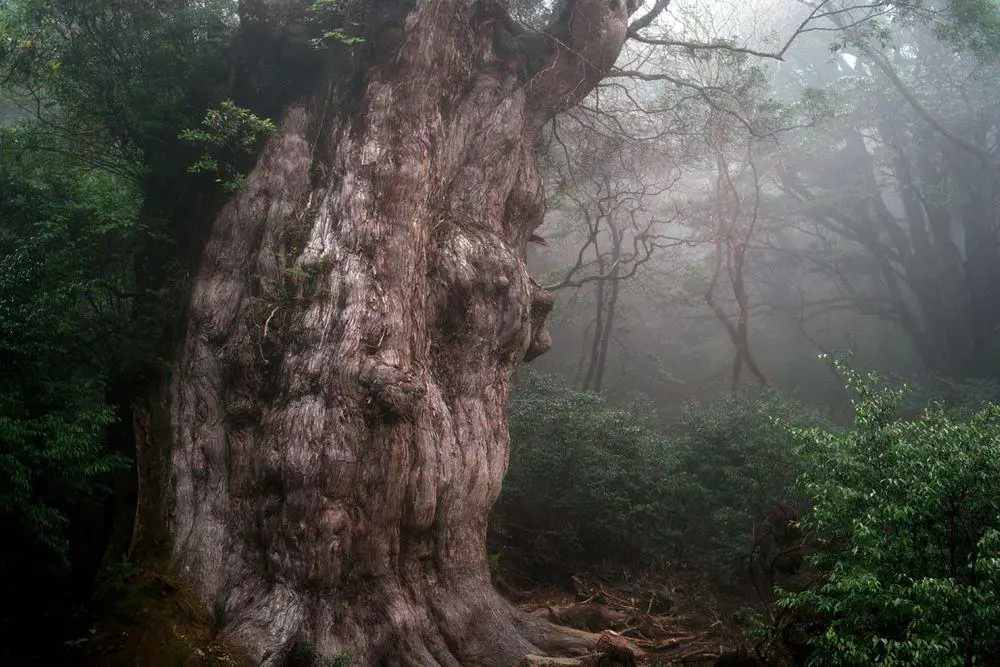
Trees
The category includes some of the most impressive and interesting separate trees in the world. The total number of tree species in the world still is a wild guess – maybe 10,000 and maybe 100,000 but most likely somewhere in between. Every month there are reported new tree species from the whole world, including Western Europe.
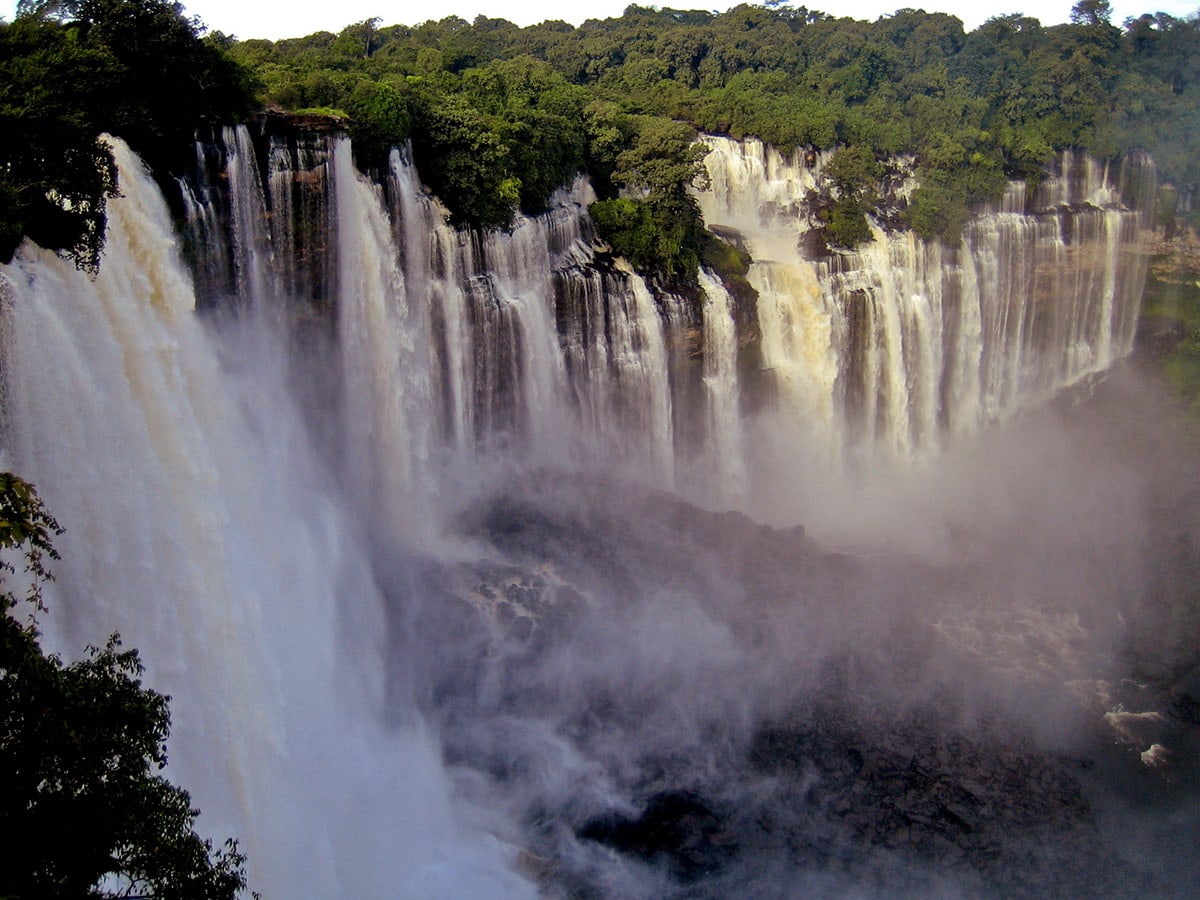
Wonders of Africa
Africa has many outstanding wonders and some of the most surprising ones are the heritage of Egyptian civilization, the vernacular architecture of the Sahel region, tropical ecosystems, and others.
 Recommended books
Recommended books
Lonely Planet Pocket Tenerife
Lonely Planet Pocket Tenerife is your passport to the most relevant, up-to-date advice on what to see and skip, and what hidden discoveries await you. Explore the Museo de la Naturaleza y el Hombre in Santa Cruz de Tenerife, celebrate Carnaval with the locals and relax on beautiful beaches; all with your trusted travel companion.
Walk this Way Tenerife
Walk This Way features the best of Tenerife’s walking routes written by travel writers who specialize in Tenerife and the Canary Islands. Some are well-trodden favorites, others are strangers to the walking groups; lovely trails that were once the lifeline between communities and are now only used by neighbors and by cats on their morning constitutionals.

